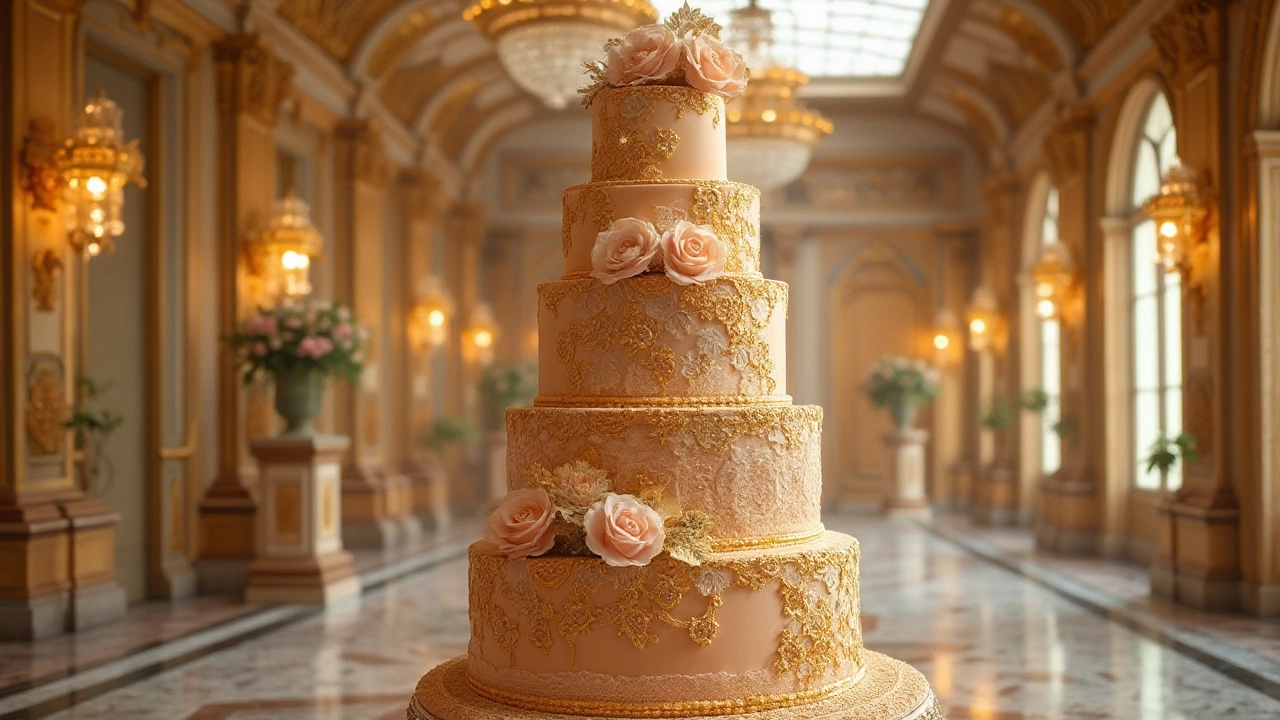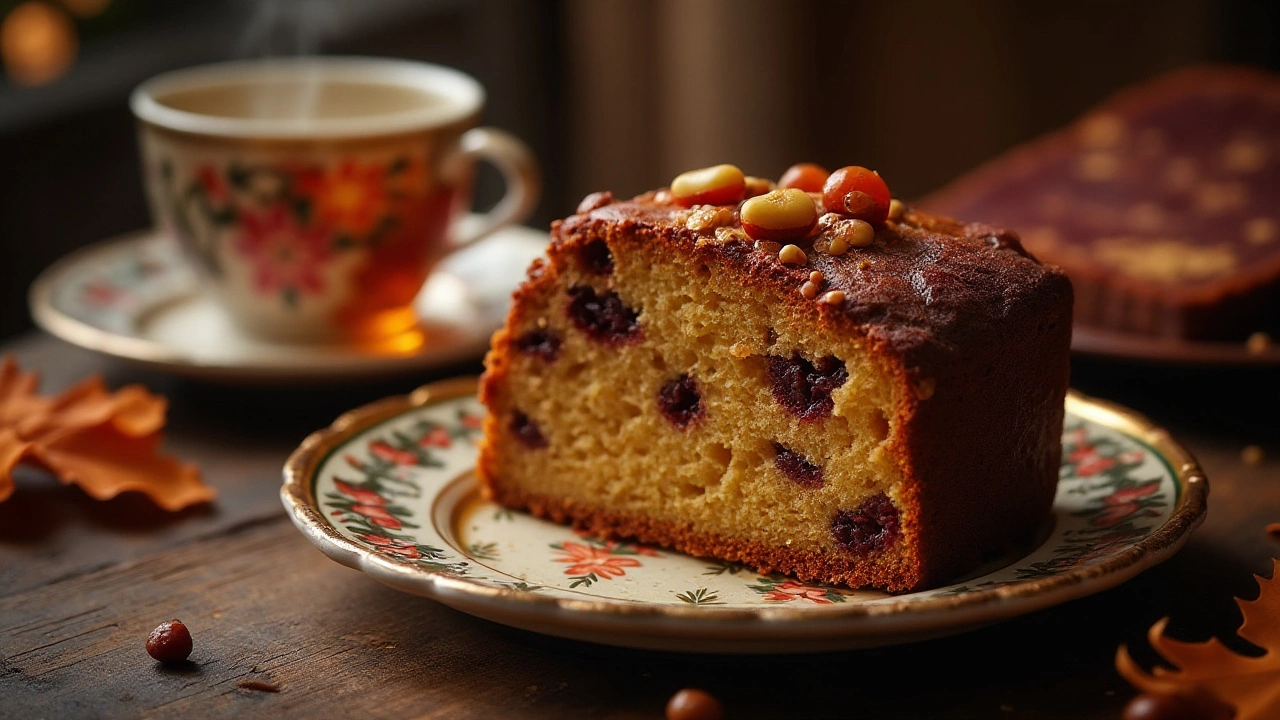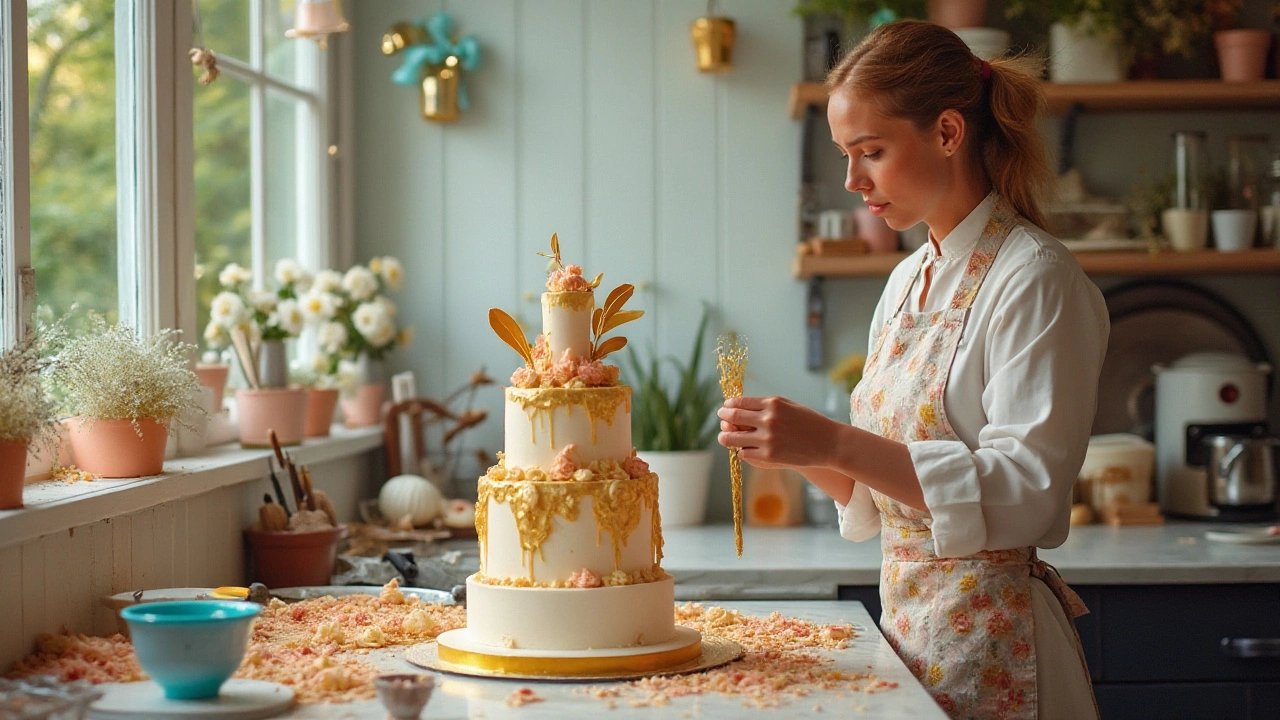
The quest for creating the most extravagant cake brings together artistry, imagination, and culinary expertise. Fancy cakes are not just desserts; they are statements of style and luxury. These cakes go beyond taste—they capture the eye and imagination, often becoming the centerpiece of grand celebrations.
In this journey, one will explore the world-renowned cakes that have set a standard for opulence, uncover the unusual and lavish ingredients that make them special, and delve into techniques that transform a simple cake into a work of art. Whether you wish to admire from afar or bring a sprinkle of extravagance into your own kitchen, this exploration is sure to inspire and delight.
- The Art of Fancy Cake Making
- Iconic Fancy Cakes Worldwide
- Ingredients That Elevate a Cake
- Techniques for a Deluxe Touch
- Creating Your Own Fancy Cake
The Art of Fancy Cake Making
Creating a fancy cake is both an art and a science. The process often begins with a vision—an image in the mind of the artist, much like a painter visualizing a masterpiece before the first stroke. For many, the cake becomes a canvas to express stories, cultures, and emotions. The techniques used in crafting these cakes have deep roots in history, influenced by traditions from various corners of the world. What makes a cake fancy is not merely its aesthetic appeal but a combination of texture, flavor, and presentation that tantalizes all senses.
The journey from a simple concept to a grand luxury dessert involves choosing rare and exotic ingredients that lend a distinct character to the creation. Bakers might select Madagascar vanilla for its unparalleled richness or saffron threads for a splash of color and warmth. Attention to detail is crucial; each element complements the others, contributing to a harmonious yet opulent experience. It's not uncommon for bakers to spend days or even weeks perfecting a single cake, ensuring every layer is baked to perfection, every swirl of icing is immaculate, and every decorative element is precisely placed.
"To create something exceptional, your mindset must be relentlessly focused on the smallest detail," says famous pastry chef Dominique Ansel, known for his inventive and luxurious sweet creations.
Modern technology has greatly expanded the scope of gourmet cake design, with 3D printers now used to create intricate sugar sculptures or chocolate decorations that otherwise would be impossible by hand. These tools allow for an added dimension of creativity and precision, yet they remain a complement to traditional craftsmanship rather than a replacement. The heart of fancy cake making is still grounded in hands-on skills, with artisans rolling fondant, piping royal icing, or sculpting marzipan.
Mastering Techniques
Mastery of techniques often separates an average cake from one that is truly iconic. For instance, the art of sugar pulling and blowing requires immense patience and skill, producing delicate, glass-like decorations that captivate the imagination. Bakers must also understand the chemistry behind baking—a fundamental requirement to adjust and accommodate several factors such as altitude, humidity, and ingredient variability. The passion driving these bakers is what elevates their work from a simple cake to an exquisite piece of art celebrated across the globe.
Moreover, the importance of storytelling cannot be overstated. Each luxury cake often tells a tale, be it the heritage of the ingredients, the personal history behind its creation, or the environment surrounding the celebration it graces. With this multilayered approach, fancy cakes become more than food; they transform into legends passed from one generation to the next, inspiring bakers and non-bakers alike. It's this blend of artistry, tradition, and innovation that keeps the world enchanted with the art of fancy cake making.
Iconic Fancy Cakes Worldwide
In the realm of confectionery, certain fancy cakes have earned an iconic status. These delicate creations are revered not only for their flavor but also for their breathtaking appearance and the stories behind them. The croquembouche, a towering cone of profiteroles, stands as a testament to French patisserie prowess. Each puff is meticulously arranged and often drizzled with caramel or spun sugar, creating a striking visual of golden cascades. Traditionally served at weddings or celebrations, this dessert not only exemplifies elegance but also illustrates the elaborate artistry involved in creating luxury desserts.
Venturing to the British Isles, we find the rich and intricate Battenberg cake. With its distinctive checkered pattern of pink and yellow sponge, wrapped snugly in a layer of marzipan, this cake is said to have been created in honor of the marriage of Princess Victoria to Prince Louis of Battenberg. It represents a nexus of tradition and culinary craftsmanship, its precise squares showcasing the painstaking attention to detail characteristic of such gourmet cakes. To this day, baking a Battenberg requires both precision and patience, as each piece must fit perfectly to maintain its unique pattern.
In the sphere of unparalleled opulence, the Fabergé Egg cake mimics the renowned jeweled eggs created by the Russian House of Fabergé. This cake is not merely decorated with sugar, but often adorned with real gold leaf, handcrafted sugar ornaments, and even edible diamonds. While eating such a cake might seem indulgent, if not excessive, it symbolizes the spirit of luxury and artistry, pushing the envelope of what dessert can encompass. Relishing in a slice is akin to partaking in a culinary testament to creativity and extravagance.
Asia offers its share of extravagant creations, with the Japanese roll cake taking center stage. Known for its cloud-like texture and delicate flavors, this cake embodies subtle elegance rather than grandiose embellishments. Meticulously rolled and filled with treasures like matcha cream or fresh strawberry layers, it’s a symbol of harmony in flavors and presentation. The Japanese roll cake, though seemingly understated, speaks volumes in terms of craftsmanship and flavor balance, epitomizing the refined nature of luxury desserts.
Perhaps one of the most extravagant cakes to ever grace a dessert table is the Royal Wedding Cake, often crafted for notable nuptials. These cakes are towering masterpieces, taking days—if not weeks—to design and construct. Luxuriously infused with esteemed spirits like aged brandy and festooned with flowers, edible pearls, and lace-like icing, each element is an ode to celebration. The most admired royal wedding cakes not only captivate through magnitude but reflect a lineage of tradition, aesthetic excellence, and taste that defines an era. As an anonymous baker once reminisced,
“Creating a masterpiece that resonates with history, emotion, and excellence is the true essence of baking.”

Ingredients That Elevate a Cake
Creating a cake that's not only delicious but also boasts an aura of luxury often requires a thoughtful selection of ingredients. At the heart of any fancy cake is a blend of high-quality elements, each chosen to bring out unique flavors and textures, elevating the dessert to a new level of sophistication. One of the most notable ways to achieve that is by integrating rare and exotic components, which provide a distinct taste profile and an element of surprise to the palate. Consider using Madagascan vanilla, known as the queen of spices, renowned for its rich and creamy flavor that distinguishes any cake from the ordinary vanilla-infused options. This vanilla extract is no just a flavor enhancer but also a symbol of craftsmanship and dedication in cake making.
Another luxurious addition to the list of ingredients is chocolate, but not just any chocolate. Opt for high cocoa content blends or single-origin chocolates like those from Ecuador or Ghana, which introduce depth and complexity. The varying notes from earthy to fruity can transform the taste experience, making the cake a true gourmet creation. One can experiment with different kinds of chocolates, say a rich dark chocolate ganache or a velvety milk chocolate mousse, to cater to diverse taste preferences. Moreover, adding a hint of gold to the cake can make it look fabulous. Edible gold leaf or dust is an age-old luxury that has stood the test of time, offering not only an ornamental touch but also an indulgence that connoisseurs cherish.
In the realm of lavish flavors, liqueurs and spirits such as Grand Marnier, Limoncello, or dark rum often feature prominently. These not only add moisture but also infuse cakes with a layered taste experience that speaks of sophistication. For instance, traditional fruitcakes are greatly enhanced by aged cognac or brandy, where the alcohol preserves the fruit and brings out mature, robust flavors over time. The art of balancing these flavors is essential, ensuring that the strength of the alcohol doesn't overpower the other ingredients. When properly balanced, these spirited infusions can elevate a simple luxury dessert into a memorable masterpiece.
Then, there's the realm of fresh ingredients which should never be underestimated. Incorporating in-season or rare fruits such as passionfruit, yuzu, or even wild berries can provide a refreshing contrast to richer elements. Their natural sweetness and acidity offer a balancing act in the cake construction, amplifying the overall tasting experience. To further enhance the taste, consider using nuts such as Sicilian pistachios or Spanish Marcona almonds. These add a delightful crunch and provide a richness that ordinary nuts might not achieve. Such additions not only promise a more satisfying texture but also lend a grandeur to the cake presentation.
Michel Roux Jr., a renowned chef, once mentioned, "The flavor is both in the imagination and the balance of ingredients." This captures the essence of why the choice of specific, high-quality ingredients can transform a cake into an esteemed culinary piece.
Let’s not forget the importance of sugars and flours. Organic and specialist sugars such as muscovado or coconut sugar can contribute distinct molasses notes or caramel-like sweetness, contrasting standard white sugar’s one-dimensional flavor. Similarly, consider using cake flour with a lower protein content, or even experimenting with almond or spelt flours, for a tender crumb that's both light and delicately flavorful. Such meticulous attention to detail ensures that every bite is an exploration of taste, texture, and enjoyment. The luxurious path of cake-making is filled with endless possibilities — a creative playground for those daring enough to explore and experiment.
Techniques for a Deluxe Touch
Creating a truly luxurious cake is an art that combines skillful technique with a dash of creativity. It is a pursuit where every detail counts, and each element works in harmony to create an unforgettable work of edible art. To start off, the choice of ingredients can significantly influence the texture and flavor. Using fresh, high-quality butter instead of the margarine typically used for economical baking can make a world of difference to the taste. Similarly, pure vanilla extract stands far above vanilla essence in terms of depth of flavor, providing that elusive, gourmet touch.
Balance and harmony in flavors are also crucial when aiming for luxury. Classic combinations, like chocolate with raspberry or lemon with elderflower, are favored for their tried-and-true appeal, yet layering different textures can elevate these flavors to new heights. A soft sponge paired with a crunchy nut layer or a smooth ganache frosting adds dimension and intrigue to each bite. Experimenting with unexpected pairings, such as white chocolate and passion fruit, can also surprise and delight the palate.
Mastery of advanced techniques is another defining hallmark of a fancy cake. Learning to temper chocolate properly not only ensures a glossy finish but also offers the satisfying snap that is a marker of excellence. Developing the skill to create intricate sugar decorations, from delicate flowers to stunning sculptures, transforms a standard cake into a masterpiece. A skilled hand with a piping bag can weave intricate patterns and designs that mimic those found in nature, adding an impressive visual complexity to the cake. These techniques, though requiring practice, reward the baker with results that are nothing short of spectacular.
The finishing touches are where the magic truly happens. A cake's decoration isn't just about the look but also about tying the flavors together to create a cohesive piece. Edible gold leaf application is popular for fancy cake creations for its opulent appeal, though it can be subtle, adding just a touch of luxury rather than overt flamboyance. Hand-painted detailing with edible colors allows for a personalized finishing touch, transforming the cake into a unique canvas, ready for any theme or celebration imaginable.
"Every cake has a story to tell; it's up to the baker to bring it to life," says renowned pastry chef Dominique Ansel. In the realm of fancy cakes, this sentiment rings profoundly true. Cakes aren't merely baked goods; they are expressions, celebrations of creativity, and festivity captured in flour and sugar.

Creating Your Own Fancy Cake
Creating your own fancy cake is an artistic endeavor that combines baking skill with creative flair. At its heart, cake crafting is an accessible art form that invites even novice bakers to explore textures, flavors, and styles. The journey to mastering this craft, however, does require certain guidelines and a generous amount of patience. It's crucial to begin with a solid foundation—a reliable recipe for a classic cake base like a sponge, butter, or chiffon cake. From there, the door to customizations swings wide open. Whether incorporating unique flavors such as rose water or exotic spices or selecting rich add-ins like chocolate ganache or salted caramel, each decision builds towards your ultimate masterpiece.
Materials and Tools
To bring a luxury dessert to life, having the right materials and tools on hand is essential. Cake pans of various sizes are a must, allowing for creative layering and design. An offset spatula can be a game changer when it comes to smooth icing application, while a rotating cake stand aids in achieving a uniform finish. Decorating tips of different sizes and shapes open up myriad possibilities for buttercream flowers, elaborate piping, or other designs. Don’t overlook the small, often underestimated tools either, such as toothpicks for testing done-ness and a fine-mesh sieve for dusting cocoa or sugar for aesthetic touch-ups.
Borrowing from the Masters
One fascinating trend in creating gourmet cake is to look for inspiration from established cake artists. They often play with color boldly and employ techniques like airbrushing to create magical effects. An inventive approach can be seen in the work of acclaimed patissiers like Pierre Hermé, whose unique flavor profiles and attention to detail serve as great sources of inspiration.
"Dessert is like a feel-good song, and the best ones make you dance," said celebrity chef Edward Lee, highlighting the joy that should resonate from an authentic cake creation.
Techniques for Extravagance
Delving into techniques such as fondant rolling or sugar work enables bakers to achieve that premium look often showcased in high-end cakes. Fondant gives a flawless finish and can be molded into almost any shape. Mastering fondant involves kneading it to the right consistency and rolling it to the correct thickness, ensuring it adheres smoothly to the cake. Sugar craft, which can create anything from delicate flowers to intricate sculptures, is another technique that demands both precision and artistry. A sugar thermometer is vital for this task, keeping the sugar at perfect melting temperature to form the desired decorative elements.
Bringing Flavor to Life
While the visual component of a cake captivates at first sight, the flavor profile leaves a lasting impression. When aiming for a true luxury dessert, the balance of flavors must be as meticulous as the presentation. Cakes like the St. Honoré or the Black Forest are celebrated for their rich and contrasting flavor layers. Using high-quality ingredients like Madagascar vanilla beans or single-origin cocoa can significantly enhance taste. Exotic fruits or rare nuts also infuse a unique character into your creation, making it stand out in both quality and taste.
Final Touches and Presentation
No fancy cake is complete without exceptional finishing touches. Edible gold leaf or silver dust can turn a cake into a true showstopper. Fresh flowers, carefully selected and non-toxic, can bring a natural elegance to your dessert presentation. When displaying your elegant creation, consider using ornate cake stands or plates that add to the overall aesthetic. The magic of high-end cake design lies not just in its complexity, but in fostering an experience that celebrates both the visual beauty and the culinary journey, resulting in a well-crafted cake that tells a story all of its own.